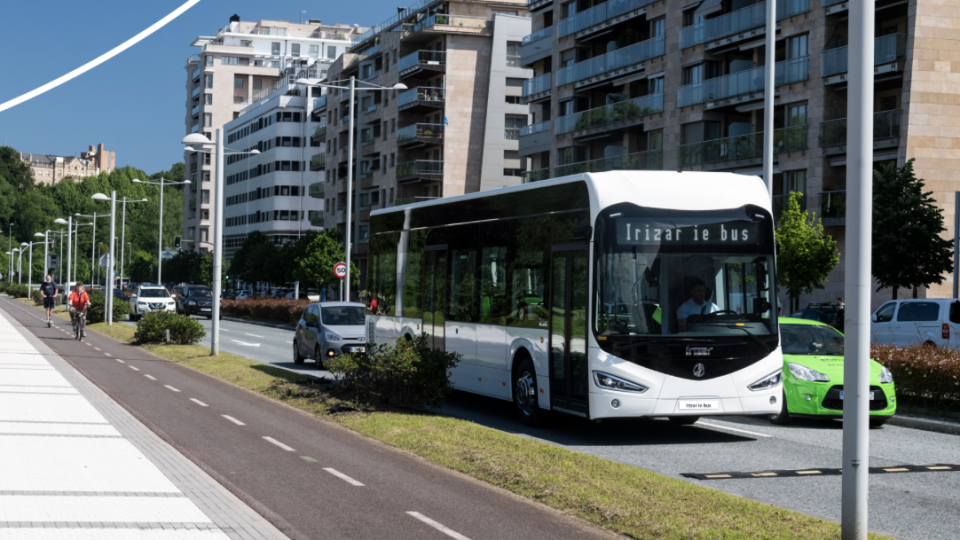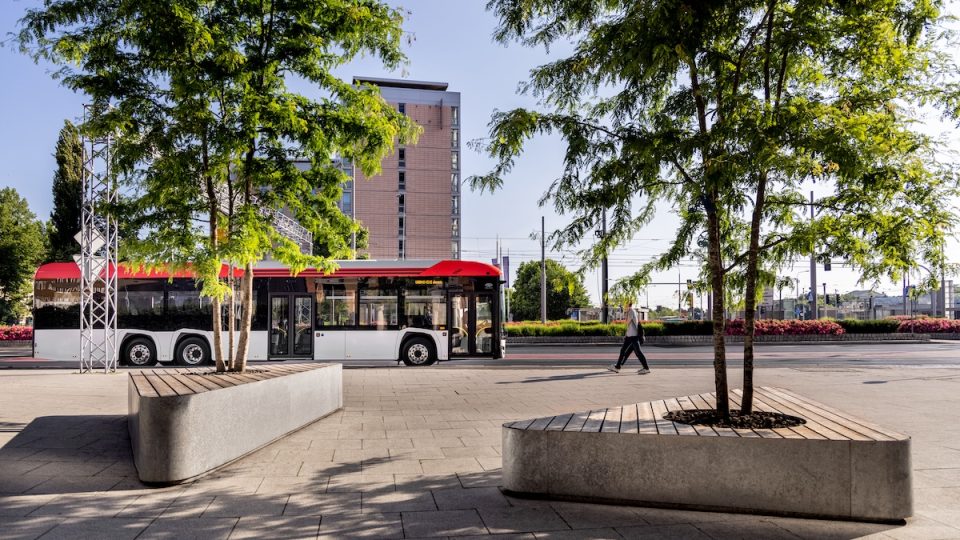Iveco Bus launches the Crossway electric high-floor. Autonomy? 500 kilometers!
After the Crossway Low Entry Elec and the Crossway Normal Floor Mild Hybrid, Iveco Bus has raised the curtain on the latest product innovation, in the name of electric: Crossway Elec high-floor, welcome! The official presentation of this intercity electric bus comes just a few days after Daimler Buses’ reveal of the eIntouro and took […]
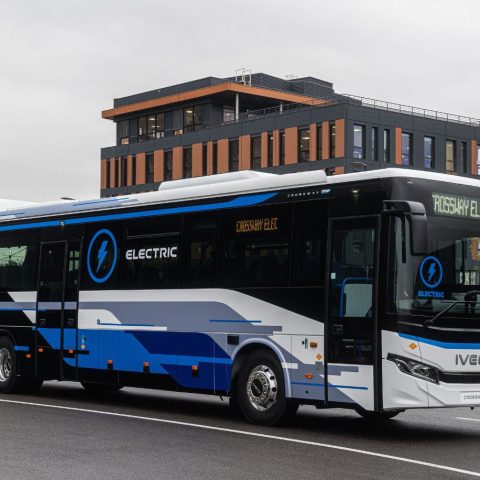
After the Crossway Low Entry Elec and the Crossway Normal Floor Mild Hybrid, Iveco Bus has raised the curtain on the latest product innovation, in the name of electric: Crossway Elec high-floor, welcome!
The official presentation of this intercity electric bus comes just a few days after Daimler Buses’ reveal of the eIntouro and took place today in France, on the occasion of the eighth edition of the Autocar Expo in Lyon. The new electric version of the best-selling Class II in Europe confirms the OEM’s commitment to decarbonizing school and interurban transport solutions, where the model that will be available from 2025 fits in.
The Crossway Elec high-floor is produced in the Vysoke Myto plant, Czech Republic.
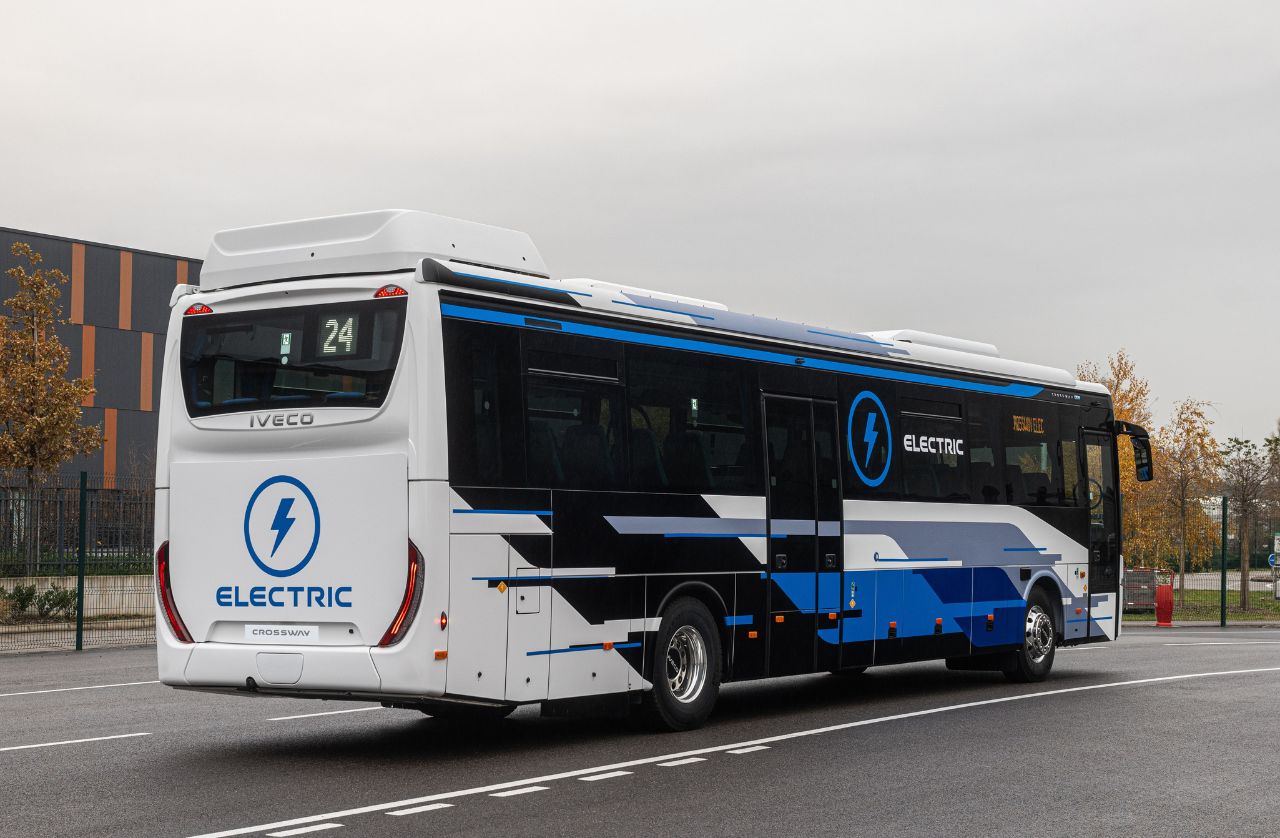

The new electric Crossway by Iveco Bus
Modularity is the mantra of the high-floor Crossway Elec, with a maximum declared autonomy of 500 kilometers, thanks to 69 kWh battery packs each with high energy density and assembled by Fpt Industrial, which use NMC chemistry; the life cycle of the modules, guaranteed for 10 years, is 15 years.
Depending on the needs, 3 to 6 battery packs are planned, allocated to the roof and the rear if three or four; if, instead, five or six modules are planned, they are planned to be placed in one of the side luggage racks.
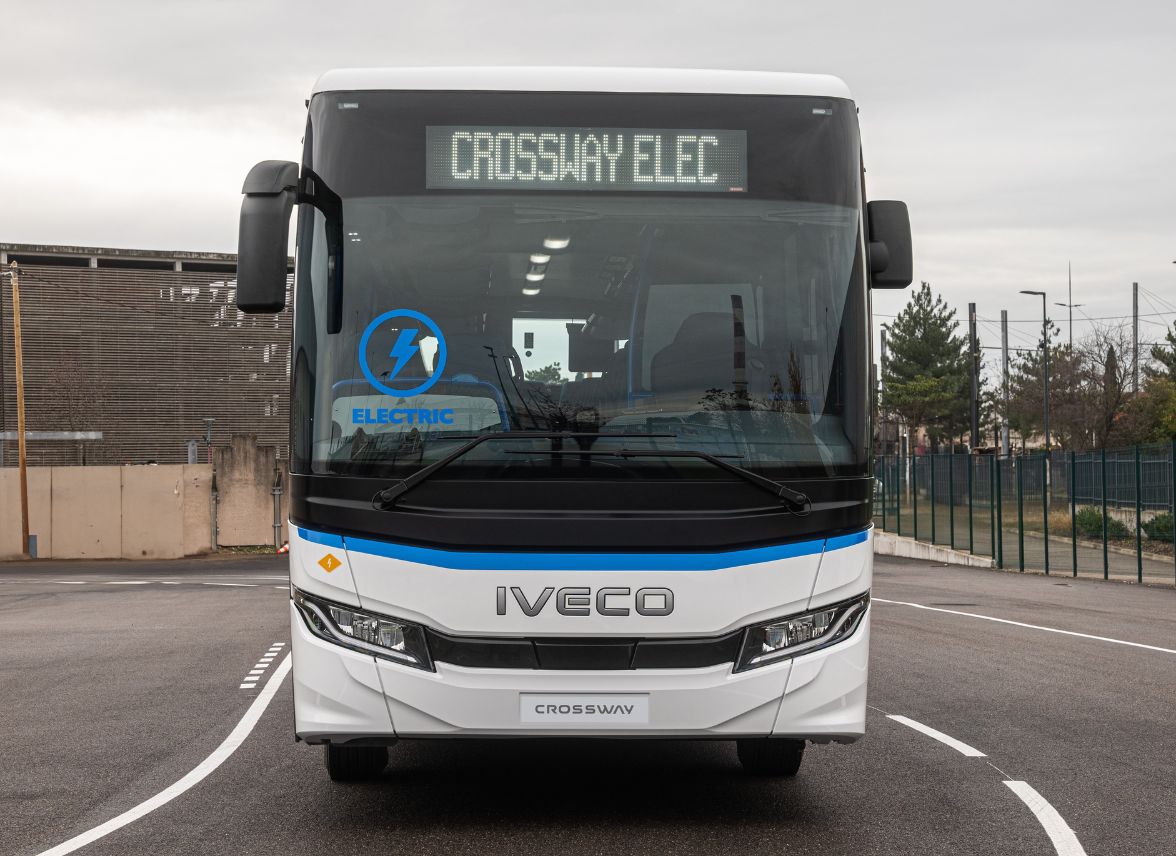
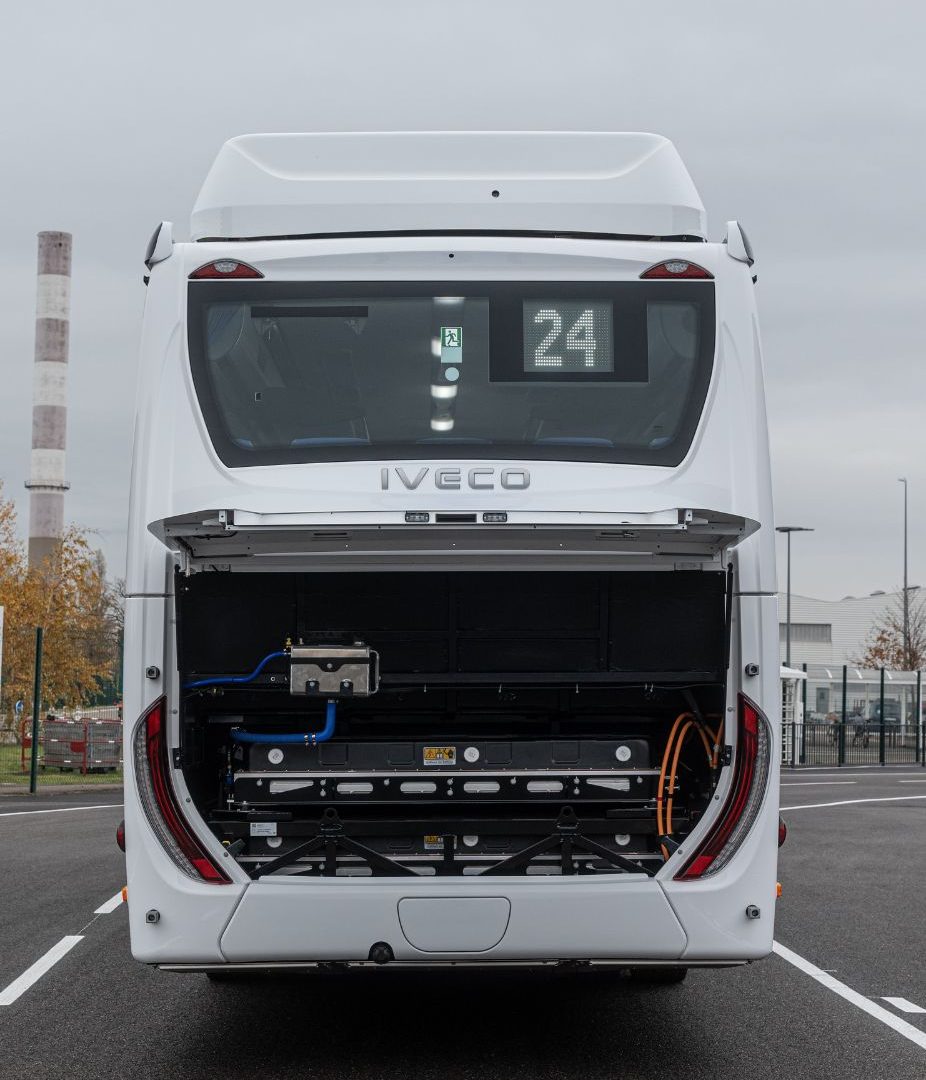
The engine is by Siemens, Elfa III model with 290 kW of power and 3000 Nm torque.
Two length variants are planned: 12 and 13 meters. In the first case, the passenger load capacity is 57 people, which increases to 63 in the long version.
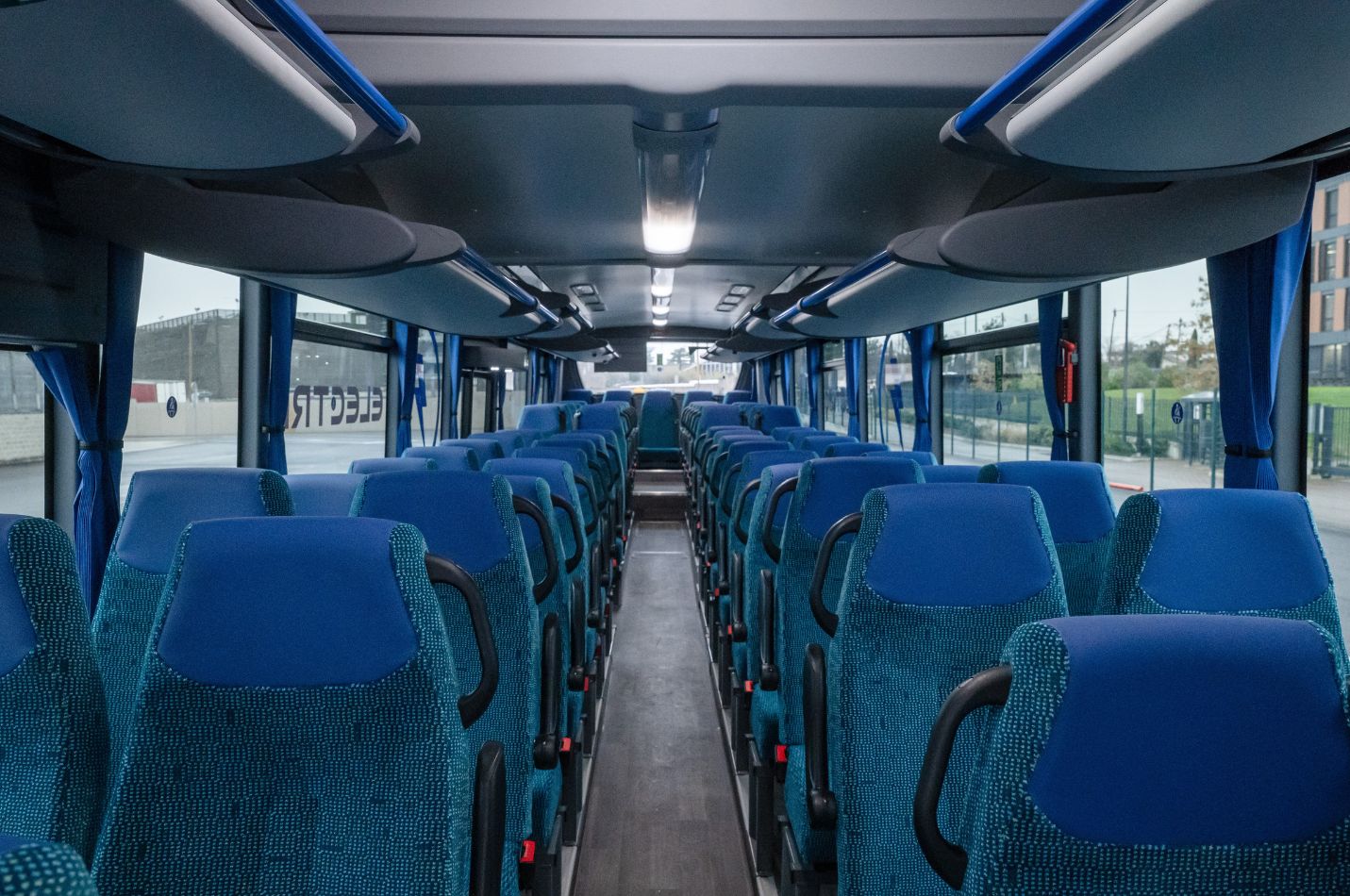
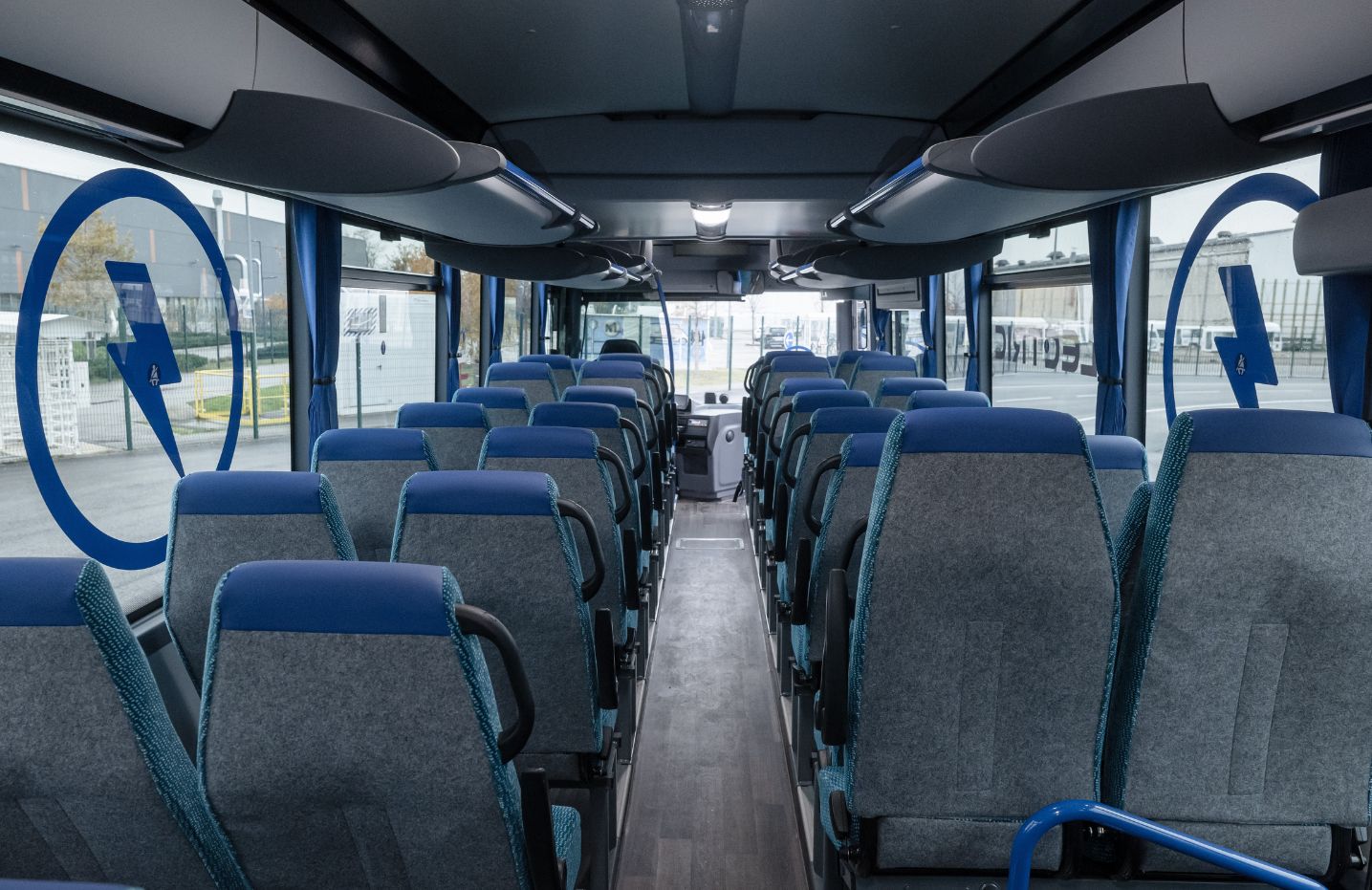
«The addition of the Crossway Elec to our range, alongside the already available Low Entry version, demonstrates our ability to offer electric solutions in all missions,” said Giorgio Zino, Head of Commercial Operations at Iveco Bus Europe. “This new Crossway Elec is a groundbreaking vehicle. It will enable Iveco Bus, European leader in the segment, to also drive operators in their electric transition in school and intercity transport as a frontrunner. With deliveries starting in 2025, our Crossway Elec already offers transport operators an effective solution, and well before the 2030 CO2 reduction standard milestone», ended Zino.



